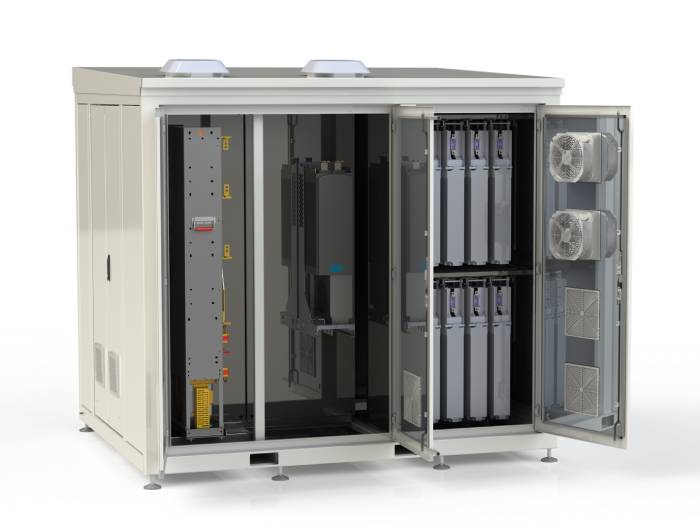E-mobility: ŠKODA's second life cycle for used batteries
Batteries from the 100% electric ENYAQ iV SUV and the OCTAVIA iV and SUPERB iV can provide sustainable energy for charging stations installed in ŠKODA dealers. The innovative system can store up to 328 kWh of power.
All-round sustainable mobility, taking products’ entire life cycle into account, is the basis for the ŠKODA project to reuse batteries from electric vehicles of the iV range. This will reduce vehicles’ overall impact in terms of carbon dioxide emissions. The smart energy storage system, developed in partnership with the Czech company IBG Česko, is now being deployed at ŠKODA dealerships.
The stationary system takes batteries from the ENYAQ iV, the SUPERB iV and the OCTAVIA iV that have reached the end of their life cycle and uses them to store sustainably produced electricity.
Flexible charging
This allows electric vehicles to be charged quickly and flexibly, and dealers can also use the stored electricity for the lighting and air-conditioning in their showrooms and workshops. So far, 160 pre-orders for the innovative device have been received from dealers in the Czech Republic, Germany, the Netherlands and Slovakia. Prior to being made available to ŠKODA dealers, the energy storage units have been successfully tested in a pilot project in Prague.
Each single system can hold up to five 82 kWh batteries from the ENYAQ iV or twenty 13 kWh batteries from the SUPERB iV and OCTAVIA iV plug-in hybrid models. The system has a total capacity of up to 328 kWh, which can be used to supply fast-charging stations with power of up to 150 kW.
Green electricity

The energy storage system can also temporarily store any surplus green electricity that is generated by ŠKODA dealers’ photovoltaic systems. This electricity can then be used at any time, regardless of the weather or the current load on the local power grid.
The energy storage system can be scaled up or down, and the batteries can be exchanged in a few simple steps. In the coming years more than 4,000 of these sustainable power units could be built. Batteries from test and pre-production vehicles will be used for the first units of the new storage system, with cells from used production vehicles to be employed at a later date.
Recycling
In the meantime, data from the pilot project shows that the battery capacity in the stationary storage systems only drops by around two per cent a year. The system thus extends the useful life of the batteries to up to 15 years, significantly improving their carbon footprint.
At the end of this second life cycle, ŠKODA recycles the cells in a controlled process. The recovered raw materials are then used to produce new batteries. Each stationary energy storage system is covered by a two-year warranty; for the second-life batteries used, the warranty period is eight years.
Source: ŠKODA
